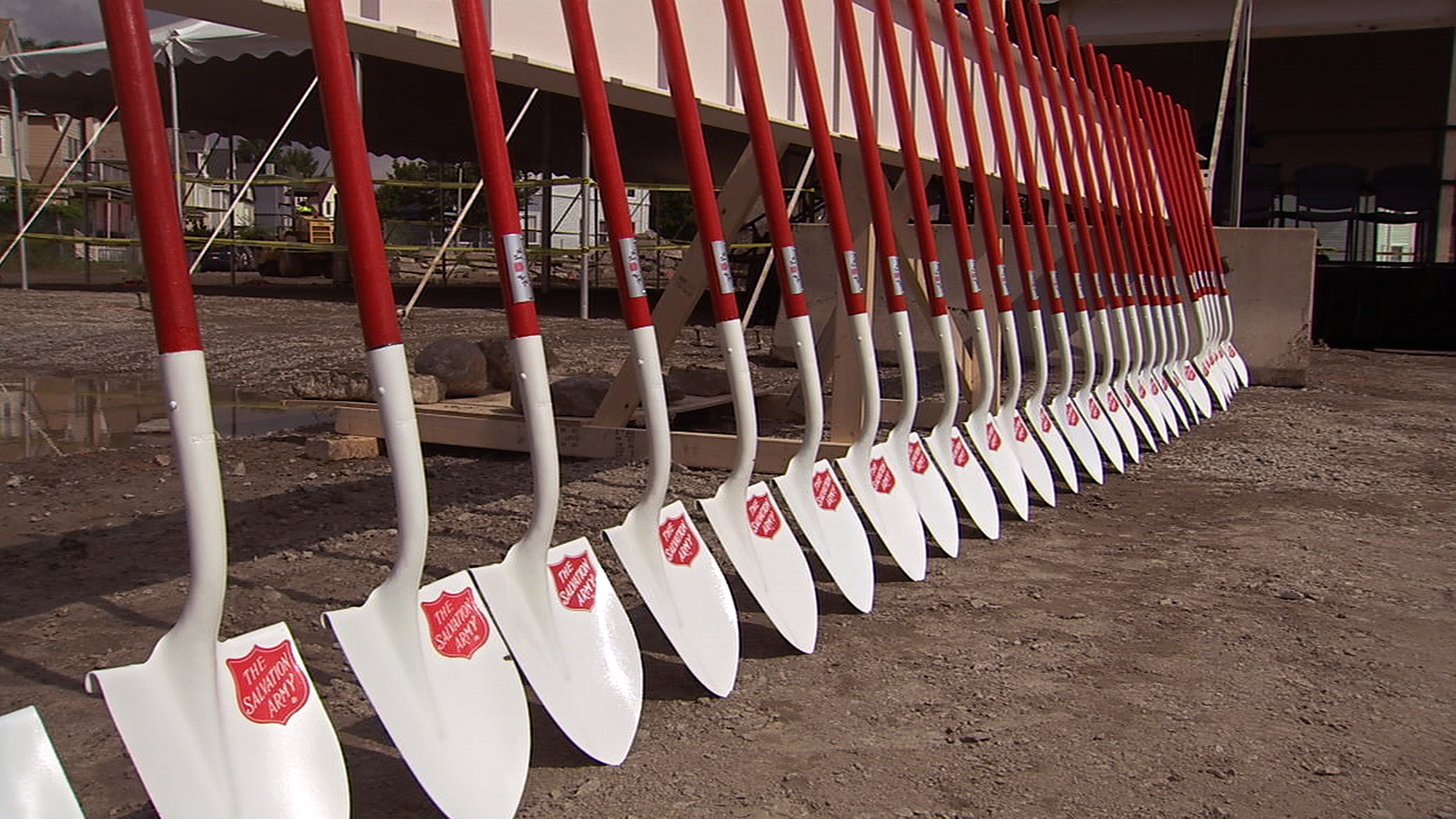About the Theme
“There was a possibility of $80 million coming to this community to build a world class community center, and they didn’t say, ‘Hey come on in.’ They said ‘Hmm. We should think about whether this is right for our community.”
Drew Forster, The Salvation Army
“It was not a forgone conclusion that the project was going to happen.”
John Barros

The Kroc Community Center was a high-stakes project: A powerful organization was seeking to build an expensive, long-needed resource in the Dudley neighborhood. A community center had been part of the community’s vision for decades; youth in the early 1990s had been involved in designing community centers that were still waiting to be realized 20 years later. The center would also generate jobs, both construction and permanent. DSNI was cautious, however, and spent a lot of time organizing community meetings with the Salvation Army’s leaders, discussing concerns about proselytizing, the program and physical plans for the center, and hiring practices.
Sometimes this process worked better than others. In the film we see that they succeeded in holding the contractor to unprecedented hiring standards. That contractor, Suffolk Construction, one of largest general contractors in New England, then went on to employ those standards in other projects. However, by the end of the film there is a major conflict over the membership pricing, accessibility of the complex, and permanent jobs.
Questions for discussion
- The Salvation Army was sent to DSNI by the mayor, and was surprised and impressed that DSNI didn’t say yes immediately. Nonetheless, what it had to offer would have been very hard for DSNI to turn down. How much power do you think DSNI/the community actually had in this partnership? How did they exercise that power? How would you have approached negotiations if you were part of DSNI? What demands would you have made and how would you have applied pressure to secure them?
- A community center had been part of DSNI’s community vision for years, starting with the Triangle Build Out Plan and the Young Architects’ Project. What do you think were the challenges in having that vision realized, but with the details potentially outside of the community’s control?
- The film shows a number of workers who don’t expect to get jobs on the site, and then we see Suffolk Construction coming very close to hitting—and some cases exceeding—what had originally been described as unreachable goals. Why do you think they succeeded where city of Boston projects had been failing consistently for years? Why is that important? What sort of changes (and pushback) would happen if all construction with any public or nonprofit support made a similar commitment?
- Residents felt betrayed when they discovered the unaffordable membership rates. Were they justified? What do you think of DSNI’s choices about how to handle it? How about the Salvation Army’s choices?
- What are the advantages and disadvantages of confrontational vs. engagement/negotiating approaches, and when are the best moments for each? How do you see various players in the film using both?
- At the end of this film, what do you expect to be the resolution of the dilemma over the membership rates? Read about what happened here: http://www.rooflines.org/3943/after_a_long_impasse_a_win_for_dudley_street/. What lessons, if any, can you draw about partnerships, from this turn of events?
- Carlos Henriquez describes some of the tension over membership rates and internal hiring by saying The Salvation Army asked “Is DSNI trying to control this building?” He responds, “We were taken aback. No we’re not trying to control this building. That’s not what DSNI does. We’re used to having input into things that come into our neighborhood.”What is the difference between meaningful input and control? What role should a community like Dudley have in questions about the construction and operation of massive developments in their footprint? How should roles be structured to be fair to all parties? Does your answer change depending on whether:
- There is public subsidy involved?
- There is public support like a zoning change involved?
- The developer is a nonprofit?
- The developer is a religious institution?
- The community planning organization helped raise substantial funds or support for the development?
Further reading/watching
“Building Partnerships for Change,” Holding Ground Productions.
https://www.holdinggroundproductions.com/wp-hgp/wp-content/uploads/2013/06/holding-ground-partner-guide.pdf
“Hitting Construction Hiring Goals,” by Travis Watson, Shelterforce.
http://www.shelterforce.org/article/3882/hitting_construction_hiring_goals/
A DSNI staff person describes in detail how they helped the contractor hit the Kroc Center hiring goals, and what they would do differently next time.
“Keeping the Jobs in House,” by Bob Brehm, Shelterforce.
http://www.shelterforce.org/article/3877/keeping_the_jobs_in_house/
A CDC in Chicago, aiming to really hire locally and frustrated with attempts to get contractors to do so, takes a different approach and starts its own construction company.
“After a Long Impasse, a Win for Dudley Street?” by Miriam Axel-Lute, Shelterforce blog.
http://www.rooflines.org/3943/after_a_long_impasse_a_win_for_dudley_street/
Slow Going for Kroc Centers, Nonprofit Times, 2006.
http://www.thenonprofittimes.com/news-articles/slow-going-for-kroc-centers/
“Money Matters for Kroc Centers,” Club Industry, 2012.
http://clubindustry.com/nonprofits/money-matters-for-kroc-centers-20120201
“Top 10 Tips for Inclusive Engagement,” By Betsy Rosenbluth, Nonprofit Quarterly, March 11, 2014.
http://nonprofitquarterly.org/management/23824-top-10-tips-for-inclusive-engagement.html
For the People, By the People: Best Practices for Maximizing Resident, Minority and Female Participation on Construction Projects, Travis Watson, DSNI, 2012. http://static1.squarespace.com/static/5515d04fe4b0263cc20b3984/t/557ecbede4b0c3993dee526f/1434373101088/For+The+People%2C+By+The+People+.pdf
For the People, By the People 2.0: Making the Right Choice Putting Residents and Local Businesses To Work, Travis Watson, DSNI, 2015. http://static1.squarespace.com/static/5515d04fe4b0263cc20b3984/t/55b64998e4b022e9ea884f60/1438009752732/For+The+People%2C+By+The+People+2.0+FINAL.pdf
Notes for Educators/Facilitators
- On the DVD, refer to the “Partnership Challenges” module to view related clips.
- Find another example of a major outside development, perhaps in your local area, that was initially presented as a boon to the community and later raised concerns. How did the reactions of authorities, owners, developers, and the community compare to the Dudley Kroc Center project?
- For students of organizing, consider having them conduct a power analysis of the players in the Kroc Center accessibility question.
(http://www.ace-ej.org/power_analysis_exercise; http://organizingforpower.org/tools/) - Try role plays negotiating Kroc Center membership fees.